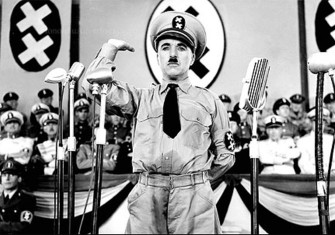Adolf Hitler, Film Fanatic
Nazi art never caught on, its architecture was unbuilt or destroyed, but its films were shot and seen by millions. The German dictator was a keen believer in the power of cinema and used it to spread the ideology of his murderous regime.
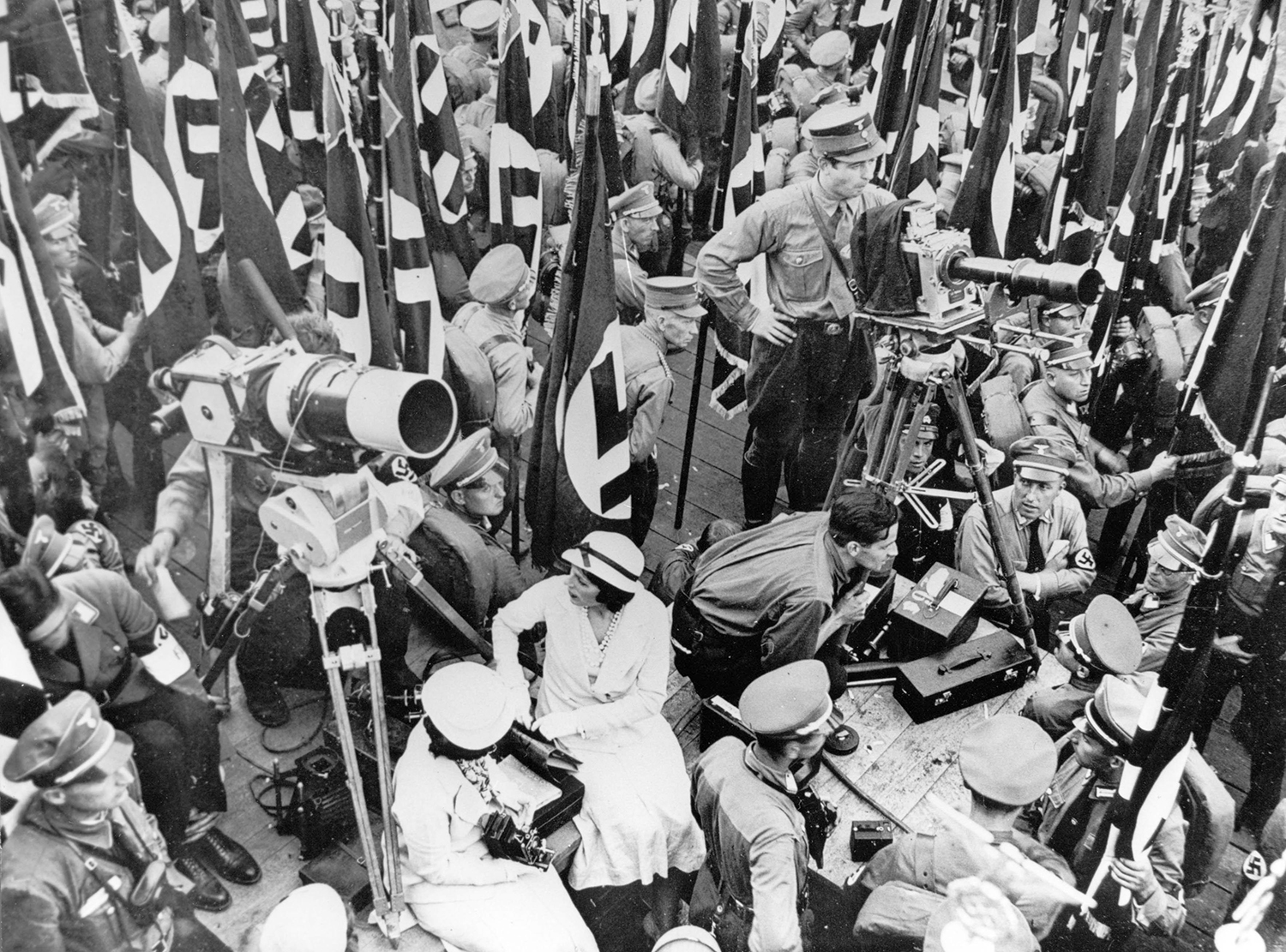
Leni Riefenstahl directing Triumph of the Will, 1934.
Up until September 1939, when he invaded Poland, Hitler spent night after night watching feature films and newsreels. He sometimes watched two, even three films, either at his mountain residence in the Bavarian Alps, the Berghof, or in Berlin at the Reich Chancellery. His viewing habits were eclectic: whatever the Propaganda Ministry was able to provide, he watched. Not just German films, but also French, American and British films, in the original language. Hitler spoke only German and his understanding of these films relied on plot descriptions handed to him by his adjutants over dinner. He not only kept up to speed with current German film production, but also explicitly asked to be shown films from the supposedly corrupt Weimar Republic and films directed by Jews, with Jewish actors. On 21 June 1938, for instance, he watched the Laurel and Hardy classic Swiss Miss (Hitler was a fan of the duo’s films). It starred the Jewish actress Grete Natzler, who had fled Germany in 1933. Later that evening, Hitler attended a private celebration of the summer solstice. The Nazis encouraged the welcoming of the winter and summer solstice in an attempt to revive Germanic customs. Hitler, it seems, moved easily from enjoying a product of ‘Jewish’ Hollywood to celebrating a Nazi ritual.
The German population during the Third Reich were occasionally informed in newspapers and books of Hitler’s viewing habits, although, unsurprisingly, no reference was made to the arbitrary, often trivial and inconsistent nature of his tastes. Germans could also read of his attendance at important premieres of Nazi propaganda films. A glance at the way Hitler distributed his public film viewings shows he used them to demonstrate his solidarity with a range of important groups whose loyalty mattered to him: the German navy (Dawn, 1933), the Hitler Youth (Hitler Youth Quex, 1933) the SA (Storm Trooper Brand, 1933), the army (Shock Troop 1917, 1934) and the air force (Pour le Mérite, 1938). Sometimes, his supposed bonds with these groups were acted out outside or within the cinema, as when Hitler made his way though an honorary cordon of SA men – mainly Nazis who had served in SA units in Berlin’s communist districts – prior to watching Storm Trooper Brand.
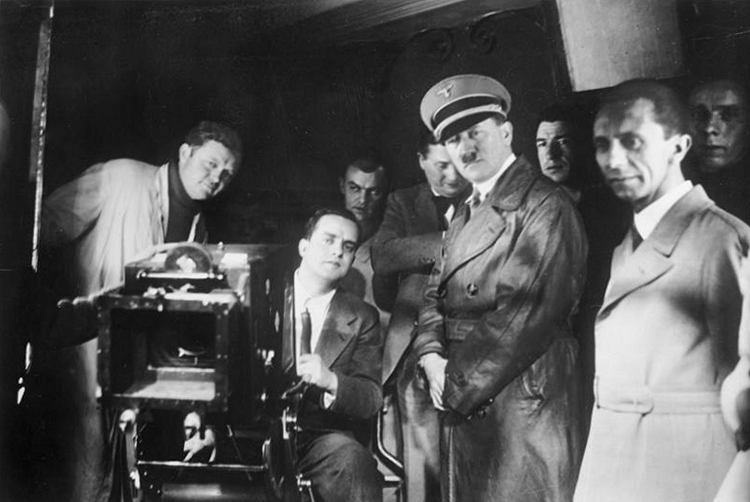
Most of the film screenings at which Hitler was present were attended by select audiences of high-ranking Nazi politicians, representatives of Nazi organisations, generals, cultural officials and other dignitaries. On 3 April 1939, however, he watched Wolfgang Liebeneiner’s comedy The Florentine Hat (1939), starring Heinz Rühmann, along with 1,000 German workers. The location was the ‘Strength Through Joy’ ship Robert Ley, the occasion the Ley’s maiden voyage. Even if The Florentine Hat was a harmless comedy, Hitler’s presence among ‘ordinary’ Germans had a political purpose: it was designed to demonstrate his closeness to the Volk.
Hitler was not only a private and public consumer of films, he also commissioned them: this was the case with Leni Riefenstahl’s films of the Nuremberg rallies Victory of Faith (1933) and Triumph of the Will, and probably with Riefenstahl’s Olympia (1938). Hitler’s choice of Riefenstahl has often been linked to a supposed affair with her. But there was no affair: during Riefenstahl’s denazification proceedings, members of Hitler’s household and entourage dismissed such stories as nonsense, insisting his relations with her had been cordial, but formal. Luis Trenker, an actor-rival of Riefenstahl’s, did much to fuel these rumours after the war as he sought to make money out of the public’s interest in sordid details of the Führer’s private life.
Even during the Third Reich, stories circulated about Hitler’s affairs with actresses, which he had never had. In 1936, Polish actress Pola Negri, the star of Mazurka (1936), a film much admired by Hitler, returned to Germany to find that her ‘simplest wish’ was ‘granted with the speed of a royal command’, as if she were under the special protection of the Führer himself. Yet she had never even met him. Hitler left affairs with actresses to Joseph Goebbels, though when one of the Propaganda Minister’s affairs – with the Czech actress Lída Baarová – threatened to ruin his exemplary Nazi marriage, Hitler stepped in to stop it. Hitler’s interest in Riefenstahl was not sexual, but pragmatic. After seeing her mountain-climbing film The Blue Light (1932), in which she appears in control of the majestic alpine scenery around her, he was convinced she would be an ideal director for the Nazi rally films. She did exactly as he had hoped, using her skills in cinematography and mise-en-scène to reinforce visually what the rallies were designed to demonstrate: that Hitler was the coordinating centre of and reference point for the Nazi faithful, massed in their serried ranks.

Goebbels has also been described as the Nazis' ‘Film Minister’, given his central role in running the German film industry – given, too, the close connection between cinema and propaganda. Yet there can be no doubt that it was Hitler who recognised Riefenstahl’s propagandistic talent and nurtured it. It was Hitler, then, not Goebbels, who triggered the rally films that were to circulate throughout German cinemas, mesmerising audiences and convincing them of the Führer’s power and the legitimacy of his rule. It was also Hitler who commissioned a key German documentary film about the Spanish Civil War. Directed by Karl Ritter, In Battle against the World Enemy reached German cinemas in June 1939, just after the Nazi forces had returned from Spain. Hitler, encouraged no doubt by Ritter’s nationalistic feature films, recognised his potential as a documentary filmmaker, as he had done in Riefenstahl’s case. In Battle against the World Enemy was envisaged by Hitler as an anti-communist justification of the exploits of the Legion Condor, of whose activities the German public were only informed officially on its return. When he asked Ritter in January 1939 to make the film, Hitler was anticipating that there would be a need for such a justification – and indeed glorification. Ritter’s film provided it.
Hitler played a central role in the gestation of films which promoted the sterilisation of the disabled. In 1936, after viewing one of the films demonising the disabled produced by the Racial-Political Office, Hitler decided that a more ‘professional’ filmic approach was required. The result was Victims of the Past (1937), a sound film which dispensed with captions. It claimed the disabled were a financial drain on the community; that they lived in palatial care homes, while many Germans lived in poverty; and that if they continued to procreate at a greater rate than the healthy, Germany would soon be a nation of imbeciles. After a joint viewing with Goebbels, Hitler insisted that the film should be deployed ‘as quickly as possible … in all German cinemas within the framework of a normal and suitable film programme’. Objections to showing the film publicly were made (by Karl Hanke, Goebbels’ secretary, among others) but overruled on the grounds that its repulsive images represented a direct response to Hitler’s instructions. Following a screening to party leaders and representatives of Nazi organizations in Berlin – Hitler was not present – the film made its way round Germany’s 5,300 film theatres. The Reich Propaganda Leadership stressed that Hitler had insisted every ‘people’s comrade’ must see Victims of the Past.
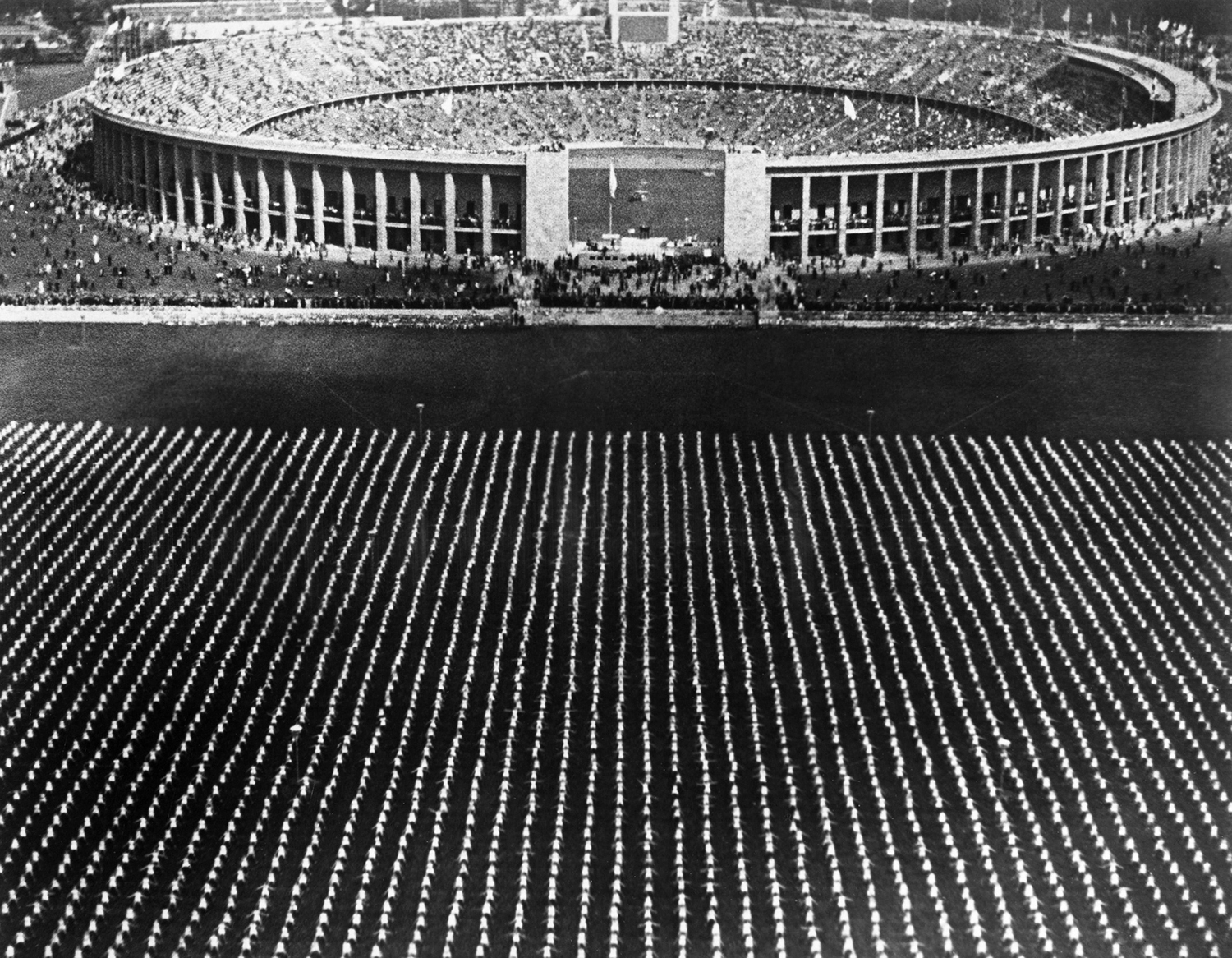
The involvement of Hitler in the notorious Nazi antisemitic feature film Jud Süβ (1940), directed by Veit Harlan, was much less direct than that of Goebbels, but no less important. The idea for that film, as well as for the ‘documentary’ The Eternal Jew (1940) probably developed in the aftermath of Kristallnacht, a pogrom against Jews carried out in November 1938. An equally important impulse was Hitler’s speech of 30 January 1939 to the Reichstag, in which he not only uttered what appeared to be a genocidal prophecy, but also threatened the US with a series of antisemitic films in the event of American film companies producing anti-German films. In the Nazi press, his speech was interpreted as a call for the production of such antisemitic films. Goebbels got the message. Jud Süβ, like The Eternal Jew, presents in visual form many of the antisemitic views peddled in Mein Kampf. These views replicate stock-in-trade antisemitic clichés, but it was Hitler’s ‘autobiography’ that significantly contributed to their popularisation in Nazi Germany. Jud Süβ played a still under-researched role, as did The Eternal Jew – the production of which was closely followed by Hitler – in the Holocaust. It helped to instil and reinforce stereotypes and to spread propaganda about the supposed threat posed by Jews to Germany and civilisation as a whole. It was shown to SS task forces prior to massacres of Jews, to concentration camp personnel, to German soldiers at the Eastern Front and elsewhere, and in occupied countries to Nazi sympathisers. It had a palpable effect on audiences all around Germany. Helene Rothenberg, whose Jewish husband was forced out of the banking business in 1936, later recalled that, on leaving a Berlin- Neukölln cinema after watching Jud Suss, she overheard fellow cinemagoers calling for the Jews to be strung up: ‘The Führer said the Jews are to blame for our problems.’
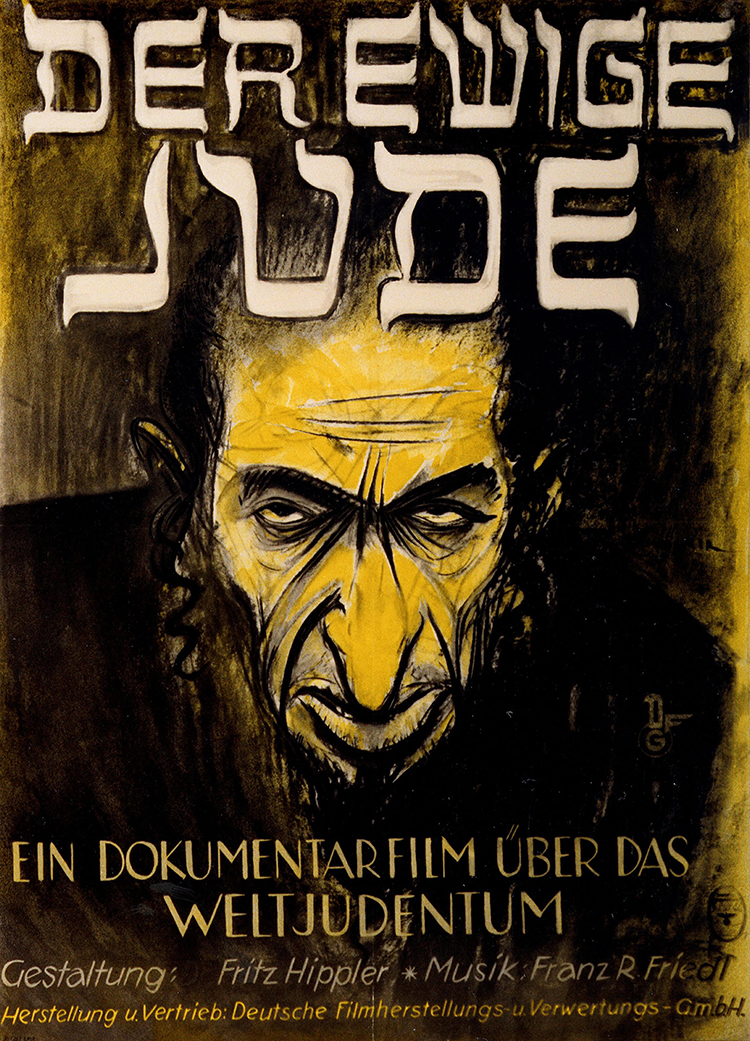
During the war, Hitler largely stopped watching feature films. He had little time for entertainment and little need for it. But he kept a close eye on documentary film production where it related to the German war effort. There is evidence he watched and intervened in the making of Campaign in Poland (1940), and he was not comfortable with the 1941 film about the Nazi attack on western Europe, Victory in the West. Made by the Army High Command rather than the Propaganda Ministry, it celebrated the soldier’s life, the army and the excitement of warfare, but did not stress the ideological nature of Hitler’s war or his role as much as he and Goebbels would have liked. To curtail the influence of the Land Army, Hitler issued a decree placing responsibility for military propaganda in the hands of the Supreme Command of the Armed Forces. Alfred Rosenberg, chief Nazi ideologue, was given more control over the military propaganda issuing from the Wehrmacht.
Hitler also maintained a keen interest in the weekly newsreels or Wochenschau throughout the war period, at least up until 1944. No newsreel could be released without having been viewed and, if necessary, altered by Hitler. A copy of the Wochenschau, with a typescript of the text that was to serve as voiceover, was sent regularly to Hitler’s Adjutants Office. Frustratingly, next to no record survives of what he changed, or added. One thing is clear: Hitler’s scrutiny of the newsreels and military documentaries, as well as his earlier commissioning of Riefenstahl’s Nuremberg rally films, reflect a preoccupation with the representation of his image. Hitler was strongly media-conscious, powerfully aware of the capacity of film and newsreel to project his chosen view of reality and of himself. It is well known that, as the war wore on, Hitler’s public appearances became rarer and rarer. Just as significant was his withdrawal from the newsreels. His physical debility, probably brought on by Parkinson’s disease, was now hard to conceal. Equally hard to deny was the likely outcome of the war. Given that he could no longer be represented as he wanted to be, he opted not to be represented much at all. Goebbels tried desperately to persuade Hitler to show himself more often, in public and in the newsreels. Hitler largely refused, feeding rumours about his ill health. In a sense, that Hitler absented himself from the newsreels was already a concession that the war was lost. German audiences noticed his absence and, according to Security Service reports, regretted it. Hitler did much to create a kind of visual dependency on his own person. Without moving images of Hitler, some German cinemagoers, perhaps many, felt rudderless.
Rumours will surely continue to circulate that Hitler had affairs with actresses, or flew into a rage at Chaplin’s The Great Dictator (even though there is no evidence he saw the film). Equally, speculation will persist as to whether his favourite film was Fritz Lang’s Die Nibelungen (1924), which is the likeliest candidate, King Kong (1933) or some other classic, made in Hollywood or Germany. That he watched Mickey Mouse films – some of which found their way into the Berghof film archive – will no doubt appear to some to offer some kind of insight into his psyche, or simply appear inconsistent with what we imagine a genocidal dictator’s private cinema fare to be. In the end, none of this matters as much as the fact that Hitler played an active part in commissioning and supporting films which helped to inculcate National Socialist values, such as obedience to the Führer, the unity of the people’s community, racial health, antisemitism, anti-bolshevism and military prowess. Hitler failed in his attempts to encourage a National Socialist art, as the failure of the Great German Art exhibitions showed. Much Nazi architecture never got beyond the drawing board or was destroyed in the war. Hitler’s main cultural legacy is the documentary films of Riefenstahl. They may be propaganda, but the fact that they are still taken seriously in aesthetic terms casts doubt on the old adage that politics always lead to bad art. Through Riefenstahl’s rally films, too, Hitler ensured that his vision of the Nazi social community as an organised body united in its loyalty to the Führer outlived the Third Reich. She may have been ‘Hitler’s director’, but he directed the masses for her cameras.
In 1940, Hitler asked Riefenstahl to contact the Kaiser Wilhelm Institute in Berlin and discuss the possibility of the production of a film material that would resist the ravages of time: ‘just imagine if, in a thousand years, people could see what we are experiencing today’. Thanks to digital reproduction technologies and the internet, audiences the world over have often unrestricted access to any number of Nazi newsreels, feature films and documentaries – including Riefenstahl’s. Many of these have undergone superficial censorship, many have not. Rarely are they prefaced by warnings. One reason for this careless approach is the mistaken notion that the Nazi film industry was run by Goebbels on the basis that it should aim purely to ‘entertain’. Yet Goebbels was a committed proponent of visual propaganda, direct and indirect. So, too, was Hitler.
Bill Niven is the author of Hitler and Film: The Führer’s Hidden Passion (Yale, 2018).




